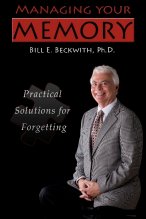Alzheimer’s disease was first described as a case study of Auguste Deter, 51 year old, in a paper by Dr. Alois Alzheimer in 1907. He visually inspected her brain after her death and described “tangled bundles of fibrils” in her cortex that we now identify as plaques and tangles. Despite having over 100 years of study, we still have more questions than answers regarding etiology and biological processes underlying this progressive neurological disease (“Alzheimer’s disease: still a perplexing problem, Krishma Chinthapelli, British Medical Journal, 2014, 349, Q4433, PMID: 25005430).
Prime Minister David Cameron announced support for the world’s most extensive population study in saying “dementia now stands alongside cancer as one of the greatest enemies of humanity.” Despite launching a study with quadruple the funding of previous work, there are huge challenges to be overcome. For example he stated that we still don’t know how the brain becomes diseased and only 3 of 101 dementia drugs developed since 1998 have made it to market.
There are three major hypotheses directing most of the medical research. The most popular hypothesis is that Alzheimer’s disease is the result of dense accumulation of amyloids (a brain protein responsible for plaques). The major problem with this theory is that amyloids do not correlate well with atrophy (brain shrinkage) and are not always present in persons with the symptoms of Alzheimer’s disease.
The second hypothesis is technically named hyperphorylated tau (the brain protein responsible for tangles). Tangles correlate better with both neuronal loss and cognitive symptoms than amyloids. However, this is a much more difficult to measure with current technology and therefore less well studied.
Last is the acetylcholine hypothesis (a neurotransmitter believed by some to be necessary to form memories). Indeed, reduced levels of acetylcholine have been found in the brains of those with Alzheimer’s disease. This has lead to the development of medications like Aricept and Exelon that are modestly helpful in some but clearly do not cure or stop the progression of the disease.
One obstacle to advancement is the fact that not all with dementia have Alzheimer’s disease (the most prevalent diagnosis of dementia). Also, not everyone with Alzheimer’s pathology as currently defined becomes demented. Therefore, accurate diagnosis is difficult. Early identification of Alzheimer’s disease remains uncertain as up to 25% of those in a recent clinical trail were misdiagnosed. Even tissue analysis is not accurate. For example, more than 50% of those with probable Alzheimer’s disease also have brain infarcts and 25% or more of those with a heavy burden of amyloids have normal cognition. So it appears that the current definition used for diagnosis of Alzheimer’s disease is arbitrary.
Finally, plaques and tangles are common in the aged but do not correlate well with clinical symptoms. There are no biomarkers that reliably identify Alzheimer’s disease. And, imaging by means of PET and MRI has poor sensitivity and specificity.
We clearly have a long way to go. Dementia including Alzheimer’s disease is not a part of normal aging. My hope is that these enhanced initiatives do not myopically stay focused on amyloids. Maybe it is time to give up the concept of Alzheimer’s disease in favor of understanding better the concept of dementia and the multiple pathways leading to functional decline that is associated with aging for some.




